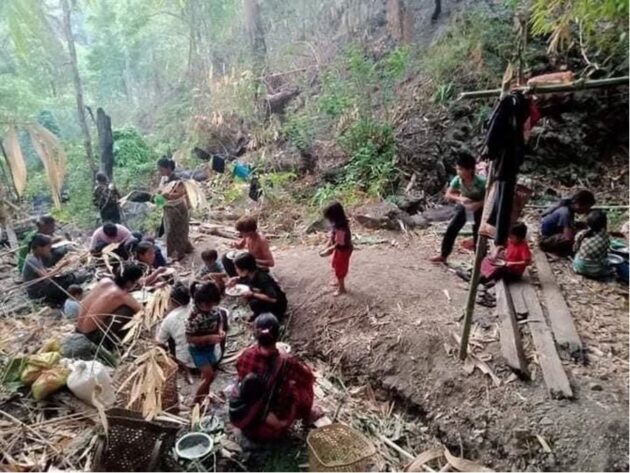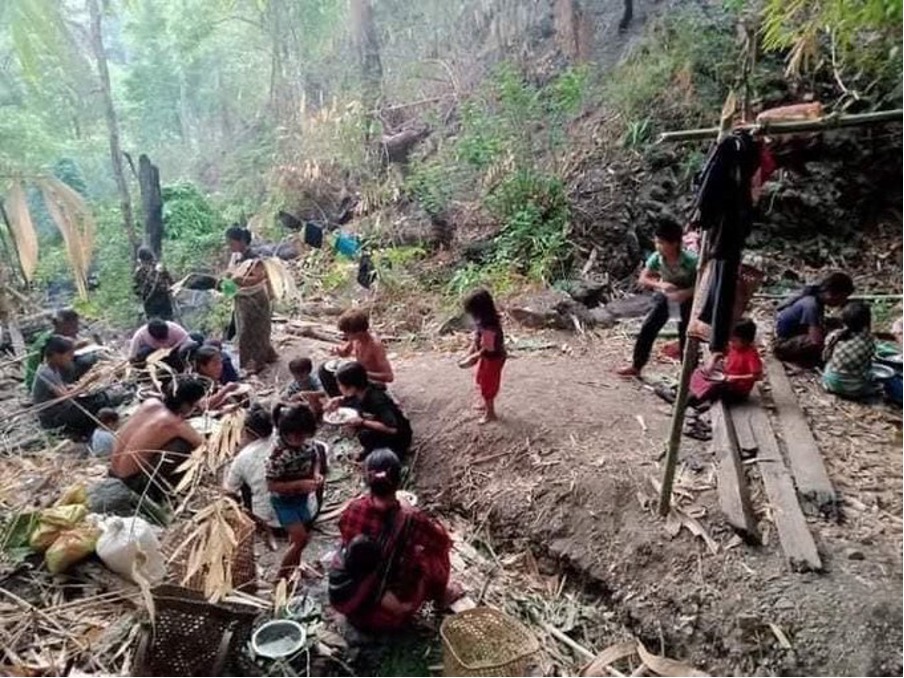19th May 2021
It seems hard to believe but this is the 100th piece I have written on Myanmar. I have tried to give background and not just concentrate on the endless round of demonstrations, slaughter, brutality, pillage, looting, illegal detention, and torture.
I have had a request to comment on China’s position vis a vis Myanmar and bearing in mind that the USA state department hasn’t analysed it yet, here goes. (Potential for egg on face!). During the 100 pieces I have tried to avoid forecasts and prophecies, but I will risk it today.
Beijing’s thinking about Myanmar dates back to well before the 2010 easing of the military stranglehold and it’s fundamental interests in Myanmar boil down to three basic factors: border stability, economic cooperation, and an energy transportation route. Among these, border stability still remains the top priority. During 2009’s Kokang conflict, China learned the danger of a premature military resolution to hostilities among border ethnic groups. The conflict sent more than 37,000 refugees into China’s southwest Yunnan province and generated tremendous pressure for the Chinese authorities to maintain stability along the border. They don’t want a repetition of that.
China then pressured the Ethnic Armed Organisations (EAOs) into discussions with the Tatmadaw to continue the peace process to resolve the conflict which had been going on since 1948. With Naypyidaw’s top security concern resolved, Beijing believed the Myanmar government would next focus on domestic economic development in an effort to boost its legitimacy. This is where China wished to step in, continuing to fill the void created by Western sanctions in the country. Approximately 54 per cent of China’s subsequent investment in the country has been focused on hydropower dam projects. In May 2010, during Thein Sein’s visit to Beijing, the two countries signed nine economic agreements, including one hydropower project and a 745 million USD credit provided to the Myanmar Ministry of Finance by the China Development Bank. In the ten years since then, the pattern has continued, with China completing many arms deals being the major supplier to Myanmar of materiel and military hardware.
Following on from the dam projects China developed its belt and road initiative and built the oil and gas pipeline project from Myanmar to Yunnan province. China built this to reduce the roadblock that is the Malacca Strait which is the route for most of its oil imports from North Africa and the Middle East. Since the beginning of its construction in June 2010, the pipeline project has enjoyed smooth progress. Although Chinese analysts acknowledge that such pipelines will not free China from its strategic vulnerability in the event of a military blockade of the Malacca Strait, expectations remain high that the pipeline project will aid China’s desired expansion of trade relations with Myanmar Southeast Asia and South Asia.

Myanmar’s Sino oil and gas pipelines.
In geopolitical terms, China has been developing a two ocean strategy. China formally introduced the national bridgehead strategy in 2012. The vice governor of Yunnan province at the time stated that China’s main theatre of international relations is the oceans. China’s coastline is all on the east side of the country leading to the strategic prioritization of the Pacific. For inland China, however, it is more convenient and active to use the Indian Ocean as the outlet. The bridgehead strategy will free China from the “strategic passiveness” of the “One Ocean Strategy” and allow it to develop more strategically aggressive positions.
During this period, Myanmar needed economic development to enhance its legitimacy, and the lack of foreign investment sources other than China laid the foundation for China’s absolute position and leverage. However, the rapid improvement of relations between the U.S. and Myanmar since late 2011 altered these assumptions, causing China to lose its monopolistic edge.
The thawing of relations between the U.S. and Myanmar were seen in the context of China’s paranoia and was seen as a conspiracy to encircle and contain China, with resulting potential threats to the Chinese south western border, Indian Ocean access, and the oil and gas pipelines. In terms of economics, the easing of sanctions opened the country allowing Western companies to return to Myanmar, creating competition for Chinese companies that have thrived under the sanctions during the previous two decades. Furthermore, China is concerned that, as multilateral financial institutions return to Myanmar offering technical assistance, these pro-Western institutions will help Naypyidaw formulate a set of economic, financial, and monetary systems without China’s participation, forcing China to accept potentially unfriendly rules in its future economic activities in the country.
Since 2015 Japan has become the major investor in Myanmar which gives them tremendous leverage. Already Japan’s Kirin Brewery has pulled out of its 50/50 joint venture with the military in Myanmar brewery. This has resulted in a 9-figure impairment on Kirin’s balance sheet.
We now come up to date and review the current position of China.
“A coup in no way is in Beijing’s interests. Beijing was working very well with the NLD,” said Yun Sun, a co-director of the East Asia Program and director of the China Program at the Stimson Center in Washington, D.C.
“If Beijing has a choice, I think they would prefer the NLD over the military. But they don’t have a choice… so they have to deal with whatever comes along.”
China’s interests in Myanmar range from the economic to the strategic. Myanmar is a rich source of natural resources like timber, jade, and natural gas. It also offers China access to the ocean on its southwestern flank, something Beijing has sought to develop through the China-Myanmar Economic Corridor, linking Yunnan province in China to the Bay of Bengal.
The return to military rule in Myanmar fueled the hypothesis that it will also bring a return to the old days, when Beijing was the country’s sole international backer. From the late 1980s until Myanmar’s opening in 2011, the Southeast Asian country was a pariah on the international stage, isolated from nearly every other country aside from China. But that is less desirable for Beijing than one might assume.
China “needs Myanmar to be a relatively normal and stable country,” Sun told The Diplomat. “If Myanmar is once again turning into the pariah of the international community, then what will [Chinese-invested] international connectivity projects lead to?”
Meanwhile, the China-Tatmadaw relationship is far from straight-forward. Myanmar’s military leaders are not keen on a full embrace of China, fearing that would amount to a de facto loss of sovereignty.
It was under Thein Sein that Myanmar began its process of opening to other partners, including the United States. In his book “In the Dragon’s Shadow: Southeast Asia in the Chinese Century” Sebastian Strangio – now The Diplomat’s Southeast Asia editor – noted that the Myitsone dam suspension “catalyzed a remarkable program of political and economic reform” in Myanmar. The steps away from overreliance on China and toward political opening were inextricably interlinked; the reform was sparked, in part, by the sense that China’s influence was a “national emergency” best countered by opening up politically to better court the West. It worked: Thein Sein hosted then-U.S. President Barack Obama in 2012 and made his own visit to the White House in 2013.
Because of Chinese support for the EAOs the Tatmadaw still has a suspicious approach to relations with China.
Meanwhile, China eventually became quite comfortable dealing with Aung San Suu Kyi, despite early expectations that her government would embrace the West. The two sides were off to an uncertain start, both because of the lack of ties between Beijing and the NLD and the elephant in the room: China’s long-time support for the military regime that had imprisoned Aung San Suu Kyi.
But once the democratic writing was on the wall, Beijing corrected course with high-profile outreach, inviting Aung San Suu Kyi for a tour of China before her NLD was voted into power.
Source The Diplomat February 3rd, 2021.
Although China is the largest arms supplier to Myanmar, the military suspects Beijing’s involvement in the country’s multitude of internal conflicts. The issue is particularly personal for Min Aung Hlaing, the junta leader and commander in chief of Myanmar’s armed forces, who in 2009 commanded forces along the Chinese border against an ethnic Chinese minority rebel group, driving tens of thousands across the border into China. The group’s leader resurfaced five years later in The Global Times, a Chinese state newspaper, sparking speculation that Beijing was providing a haven for him and his troops, who launched renewed attacks against Myanmar shortly after.
The government at the time signed highly secretive contracts for dozens of projects as part of the China-Myanmar Economic Corridor, a grand plan of connectivity meant to link China to strategic points via Myanmar. These projects, worth billions of dollars, are now likely facing delays as the country toils with protests and civil-disobedience movements meant to disrupt government operations and services, again raising questions as to why Beijing would prefer working with the military.
Source The Atlantic February 22nd, 2021.
This brings me to forecasts. China doesn’t want to get bogged down in military action in Myanmar. It would far sooner work in the background and if they have a preference, it would be for a pragmatic relationship with Daw Aung San Suu Kyi. If China overtly supports the military, it will risk destabilising its relations with the whole of South East Asia and put more emphasis on strategic pinch points such as the Straits of Malacca. It would severely jeopardise its two oceans strategy.
China will continue to show its support for the Tatmadaw as long as they are the body in control (such as it is) of Myanmar but will be working to bring about a resolution. They have no love for Min Aung Hlaing but will deal with him on a pragmatic basis. China is watching a “controlled” deterioration in Myanmar until such a stage is reached where they can offer a solution, become the good guys and reap the rewards of the success of the two oceans policy. They have no need to intervene militarily.
Meanwhile 8,000 people fled the invasion of Mindat by the Tatmadaw and face starvation in the jungle.

Please share this article so that others can discover The BFD

